Previous Posts in This Series …
2011-10-25: NIST’s Recommendations on the 9-11 WTC Building Collapses … GROUP 1. Increased Structural Integrity – Recommendations 1, 2 & 3 (out of 30)
2011-11-18: NIST WTC Recommendations 4-7 > Structural Fire Endurance … GROUP 2. Enhanced Fire Endurance of Structures – Recommendations 4, 5, 6 & 7
2011-11-24: NIST WTC Recommendations 8-11 > New Design of Structures … GROUP 3. New Methods for Fire Resisting Design of Structures – Recommendations 8, 9, 10 & 11
2011-11-25: NIST WTC Recommendations 12-15 > Improved Active Protection … GROUP 4. Improved Active Fire Protection – Recommendations 12, 13, 14 & 15
2011-11-30: NIST Recommendations 16-20 > Improved People Evacuation … GROUP 5. Improved Building Evacuation – Recommendations 16, 17, 18, 19 & 20
2011-12-04: NIST WTC Recommendations 21-24 > Improved Firefighting … GROUP 6. Improved Emergency Response – Recommendations 21, 22, 23 & 24
2011-12-07: NIST WTC Recommendations 25-28 > Improved Practices … GROUP 7. Improved Procedures and Practices – Recommendations 25, 26, 27 & 28
2011-12-08: NIST WTC Recommendations 29-30 > Improved Fire Education … GROUP 8. Education and Training – Recommendations 29 & 30 (out of 30)
.
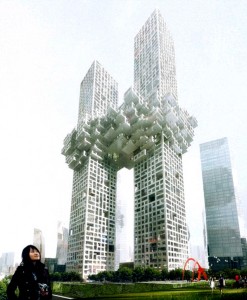
.
2011-12-15: You know what is coming soon … so Merry Christmas & Happy New Year to One and All !!
.
1. There were 2 Important Reasons for undertaking this Series of Posts …
(a) The General Public, and particularly Client Organizations, should be facilitated in directly accessing the core content of the 2005 NIST WTC Recommendations. Up to now, many people have found this to be a daunting task. More importantly, I also wanted to clearly show that implementation of the Recommendations is still proceeding far too slowly … and that today, many significant aspects of these Recommendations remain unimplemented. Furthermore, in the case of some recent key national standards, e.g. British Standard BS 9999, which was published in 2008 … the NIST Recommendations were entirely ignored.
As a golden rule … National Building Codes/Regulations and National Standards … cannot, should not, and must not … be applied without informed thought and many questions, on the part of a building designer !
(b) With the benefit of hindsight, and our practical experience in FireOx International … I also wanted to add a necessary 2011 Technical Commentary to the NIST Recommendations … highlighting some of the radical implications, and some of the limitations, of these Recommendations … in the hope of initiating a much-needed and long overdue international discussion on the subject.
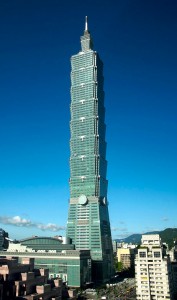
” Architecture is the language of a culture.”
” A living building is the information space where life can be found. Life exists within the space. The information of space is then the information of life. Space is the body of the building. The building is therefore the space, the information, and the life.”
C.Y. Lee & Partners Architects/Planners, Taiwan
[ This is a local dialect of familiar Architectural Language. However, the new multi-aspect language of Sustainable Design is fast evolving. In order to perform as an effective and creative member of a Trans-Disciplinary Design & Construction Team … can Fire Engineers quickly learn to communicate on these wavelengths ?? Evidence to date suggests not ! ]
.
2. ‘Climate Change’ & ‘Energy Stability’ – Relentless Driving Forces for Sustainable Design !
Not only is Sustainable Fire Engineering inevitable … it must be ! And not at some distant point in the future … but now … yesterday !! There is such a build-up of pressure on Spatial Planners and Building Designers to respond quickly, creatively, intuitively and appropriately to the relentless driving forces of Climate Change (including climate change mitigation, adaptation, and severe weather resilience) and Energy Stability (including energy efficiency and conservation) … that there is no other option for the International Fire Science and Engineering Community but to adapt. Adapt and evolve … or become irrelevant !!
And one more interesting thought to digest … ‘Green’ is not the answer. ‘Green’ looks at only one aspect of Sustainable Human & Social Development … the Environment. This is a blinkered, short-sighted, simplistic and ill-conceived approach to realizing the complex goal of a Safe and Sustainable Built Environment. ‘Green’ is ‘Sustainability’ for innocent children !!
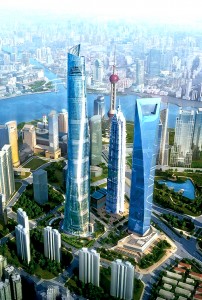
.
(a) Organization for Economic Co-Operation & Development (OECD) – 2012’s Environmental Outlook to 2050
Extract from Pre-Release Climate Change Chapter, November 2011 …
‘ Climate change presents a global systemic risk to society. It threatens the basic elements of life for all people: access to water, food production, health, use of land, and physical and natural capital. Inadequate attention to climate change could have significant social consequences for human wellbeing, hamper economic growth and heighten the risk of abrupt and large-scale changes to our climatic and ecological systems. The significant economic damage could equate to a permanent loss in average per capita world consumption of more than 14% (Stern, 2006). Some poor countries would be likely to suffer particularly severely. This chapter demonstrates how avoiding these economic, social and environmental costs will require effective policies to shift economies onto low-carbon and climate-resilient growth paths.’
(b) U.N. World Meteorological Organization (WMO) Greenhouse Gas Bulletin No.7, November 2011
Executive Summary …
The latest analysis of observations from the WMO Global Atmosphere Watch (GAW) Programme shows that the globally averaged mixing ratios of Carbon Dioxide (CO2), Methane (CH4) and Nitrous Oxide (N2O) reached new highs in 2010, with CO2 at 389.0 parts per million (ppm), CH4 at 1808 parts per billion (ppb) and N2O at 323.2 ppb. These values are greater than those in pre-industrial times (before 1750) by 39%, 158% and 20%, respectively. Atmospheric increases of CO2 and N2O from 2009 to 2010 are consistent with recent years, but they are higher than both those observed from 2008 to 2009 and those averaged over the past 10 years. Atmospheric CH4 continues to increase, consistent with the past three years. The U.S. National Oceanic & Atmospheric Administration (NOAA) Annual Greenhouse Gas Index shows that from 1990 to 2010 radiative forcing by long-lived Greenhouse Gases (GHG’s) increased by 29%, with CO2 accounting for nearly 80% of this increase. Radiative forcing of N2O exceeded that of CFC-12, making N2O the third most important long-lived Greenhouse Gas.
(c) International Energy Agency (IEA) – World Energy Outlook, November 2011
Extract from Executive Summary …
‘ There are few signs that the urgently needed change in direction in global energy trends is underway. Although the recovery in the world economy since 2009 has been uneven, and future economic prospects remain uncertain, global primary energy demand rebounded by a remarkable 5% in 2010, pushing CO2 emissions to a new high. Subsidies that encourage wasteful consumption of fossil fuels jumped to over $400 billion. The number of people without access to electricity remained unacceptably high at 1.3 Billion, around 20% of the world’s population. Despite the priority in many countries to increase energy efficiency, global energy intensity worsened for the second straight year. Against this unpromising background, events such as those at the Fukushima Daiichi Nuclear Power Plant and the turmoil in parts of the Middle East and North Africa (MENA) have cast doubts on the reliability of energy supply, while concerns about sovereign financial integrity have shifted the focus of government attention away from energy policy and limited their means of policy intervention, boding ill for agreed global climate change objectives.’
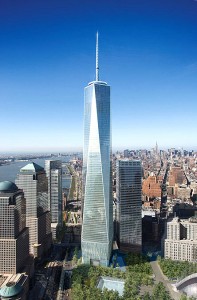
[ Not just in the case of Tall, Super-Tall and Mega-Tall Buildings … but the many, many Other Building Types in the Built Environment … are Building Designers implementing the 2005 & 2008 NIST WTC Recommendations … without waiting for Building and Fire Codes/Regulations and Standards to be properly revised and updated ?? Evidence to date suggests not ! ]
.
3. Separate Dilemmas for Client Organizations and Building Designers …
As discussed earlier in this Series … the Fire Safety Objectives of Building and Fire Codes/Regulations are limited to:
- The protection of building users/occupants ; and
- The protection of property … BUT only insofar as that is relevant to the protection of the users/occupants ;
… because the function of Building and Fire Codes is to protect Society. Well, that is supposed to be true ! Unfortunately, not all Codes/Regulations are adequate or up-to-date … as we have been observing here in these posts.
.
Just taking the Taipei 101 Tower as an example, I have very recently sent out three genuine, bona fide e-mail messages from our practice …
2011-12-08
Toshiba Elevator & Building Systems Corporation (TELC), Japan.
To Whom It May Concern …
Knowing that your organization was involved in the Taipei 101 Project … we have been examining your WebSite very carefully. However, some important information was missing from there.
For our International Work … we would like to receive technical information on the Use of Elevators for Fire Evacuation in Buildings … which we understand is actually happening in the Taipei Tower, since it was completed in 2004.
The Universal Design approach must also be integrated into any New Elevators.
Can you help us ?
C.J. Walsh
[2012-01-10 … No reply yet !]
.
2011-12-12
Mr. Thomas Z. Scarangello P.E. – Chairman & CEO, Thornton Tomasetti Structural Engineers, New York.
Dear Thomas,
Knowing that your organization was involved in the structural design of the Taipei 101 Tower, which was completed in 2004 … and in the on-going design of many other iconic tall, super-tall and mega-tall buildings around the world … we have been examining your Company Brochures and WebSite very carefully. However, some essential information is missing.
As you are certainly aware … implementation of the 2005 & 2008 National Institute of Standards & Technology (NIST) Recommendations on the Collapse of WTC Buildings 1, 2 & 7, in New York, on 11 September 2001 … is still proceeding at a snail’s pace, i.e. very slowly. Today, many significant aspects of NIST’s Recommendations remain unimplemented.
For our International Work … we would like to understand how you have responded directly to the NIST Recommendations … and incorporated the necessary additional modifications into your current structural fire engineering designs.
Many thanks for your kind attention. In anticipation of your prompt and detailed response …
C.J. Walsh
[2012-01-10 … No reply yet !]
.
2011-12-14
Mr. C.Y. Lee & Mr. C.P. Wang, Principal Architects – C.Y. Lee & Partners Architects/Planners, Taiwan.
Dear Sirs,
Knowing that your architectural practice designed the Taipei 101 Tower, which was completed in 2004 … and, later, was also involved in the design of other tall and super-tall buildings in Taiwan and China … we have been examining your Company WebSite very carefully. However, some essential information is missing.
As you are probably aware … implementation of the 2005 & 2008 U.S. National Institute of Standards & Technology (NIST) Recommendations on the Collapse of WTC Buildings 1, 2 & 7, in New York City, on 11 September 2001 … is still proceeding at a snail’s pace, i.e. very slowly. Today, many significant aspects of NIST’s Recommendations remain unimplemented.
For our International Work … we would like to understand how you have responded directly to the NIST Recommendations … and incorporated the necessary additional modifications into your current architectural designs.
Many thanks for your kind attention. In anticipation of your prompt and detailed response …
C.J. Walsh
[2012-01-10 … No reply yet !]
.
So … how many Clients, or Client Organizations, are aware that to properly protect their interests … even, a significant part of their interests … it is vitally necessary that Project-Specific Fire Engineering Design Objectives be developed which will have a much wider scope ? The answer is … not many !
How many Architects, Structural Engineers, and Fire Engineers fully explain this to their Clients or Client Organizations ?
And how many Clients/Client Organizations either know that they should ask, or have the balls to ask … their Architect, Structural Engineer and Fire Engineer for this explanation … and furthermore, in the case of any High-Rise Building, Iconic Building, or Building having an Important Function or an Innovative Design … ask the same individuals for some solid reassurance that they have responded directly to the 2005 & 2008 NIST WTC Recommendations … and incorporated the necessary additional modifications into your current designs … whatever current Building and Fire Codes/Regulations do or do not say ?? A big dilemma !
.
A common and very risky dilemma for Building Designers, however, arises in the situation where the Project Developer, i.e. the Client/Client Organization … is the same as the Construction Organization. The Project Design & Construction Team – as a whole – now has very little power or authority if a conflict arises over technical aspects of the design … or over construction costs. An even bigger dilemma !!
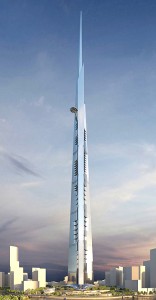
.
4. The Next Series of Posts – 2008 NIST WTC Recommendations
In the new year of 2012 … I will examine the later NIST Recommendations which were a response to the Fire-Induced Progressive Collapse of World Trade Center Building No.7.
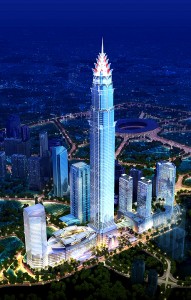
.
5. Please … Your Comments, Views & Opinions ?!?
The future of Conventional Fire Engineering ended on the morning of Tuesday, 11 September 2001, in New York City … an engineering discipline constrained by a long heritage deeply embedded in, and manacled to, an outdated and inflexible prescriptive approach to Codes/Regulations and Standards … an approach which is irrational, ignores the ‘real’ needs of the ‘real’ people who use and/or occupy ‘real’ buildings … and, quite frankly, no longer makes any scientific sense !!
On the other hand … having confronted the harsh realities of 9/11 and the Mumbai ‘Hive’ Attacks, and digested the 2005 & 2008 NIST WTC Recommendations … Sustainable Fire Engineering … having a robust empirical basis, being ‘person-centred’, and positively promoting creativity … offers the International Fire Science and Engineering Community a confident journey forward into the future … on many diverse routes !
This IS the only appropriate response to the exciting architectural innovations and fire safety challenges of today’s Built Environment.
BUT … what do you think ?
.
.
END

